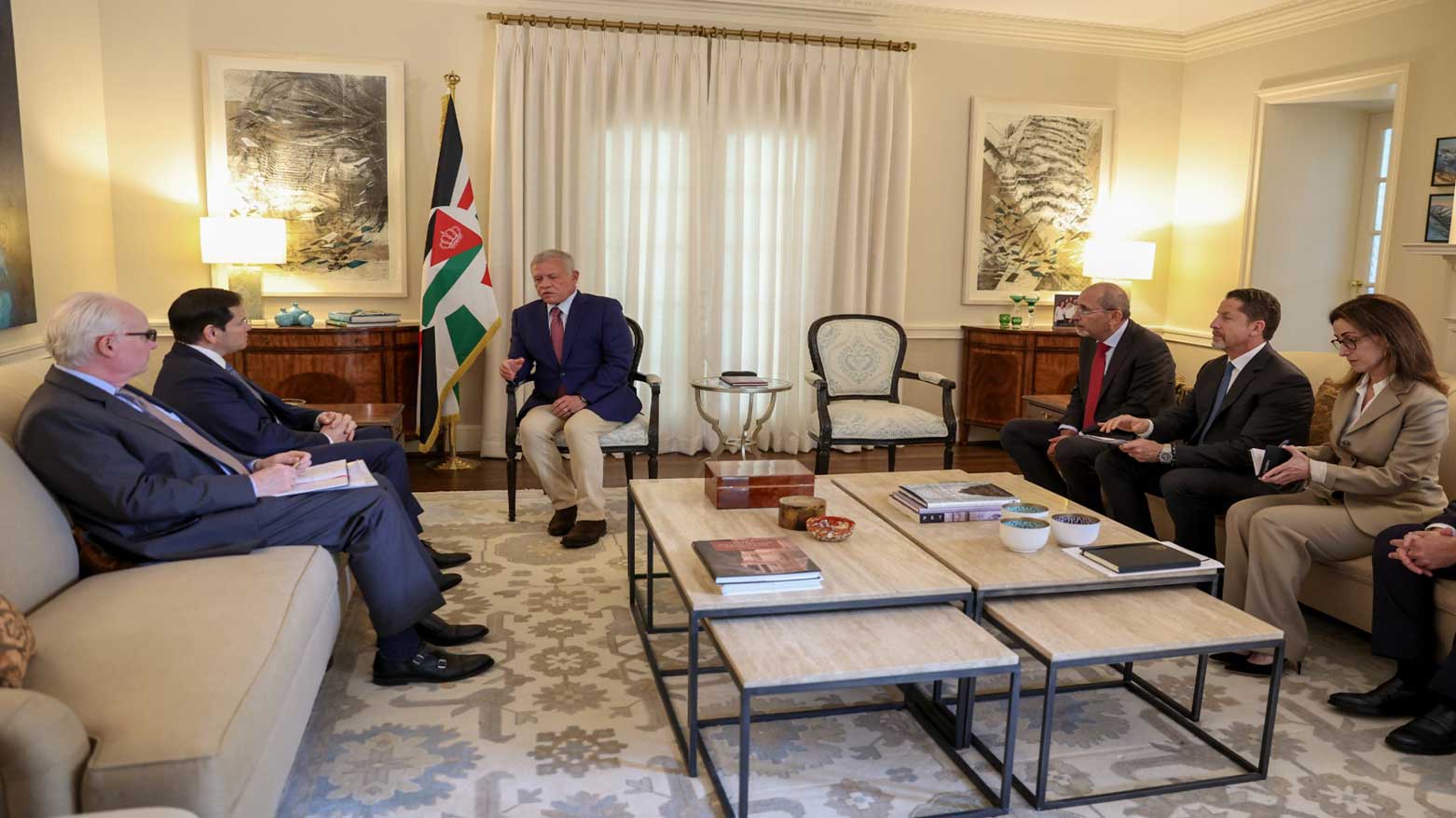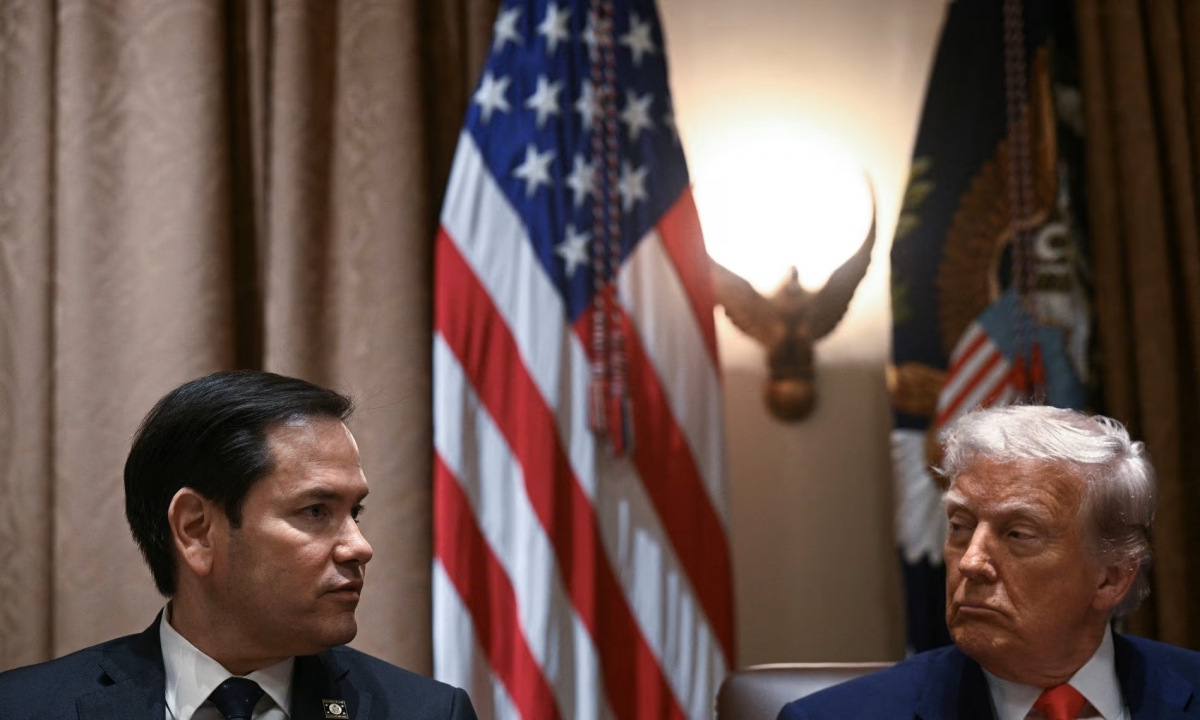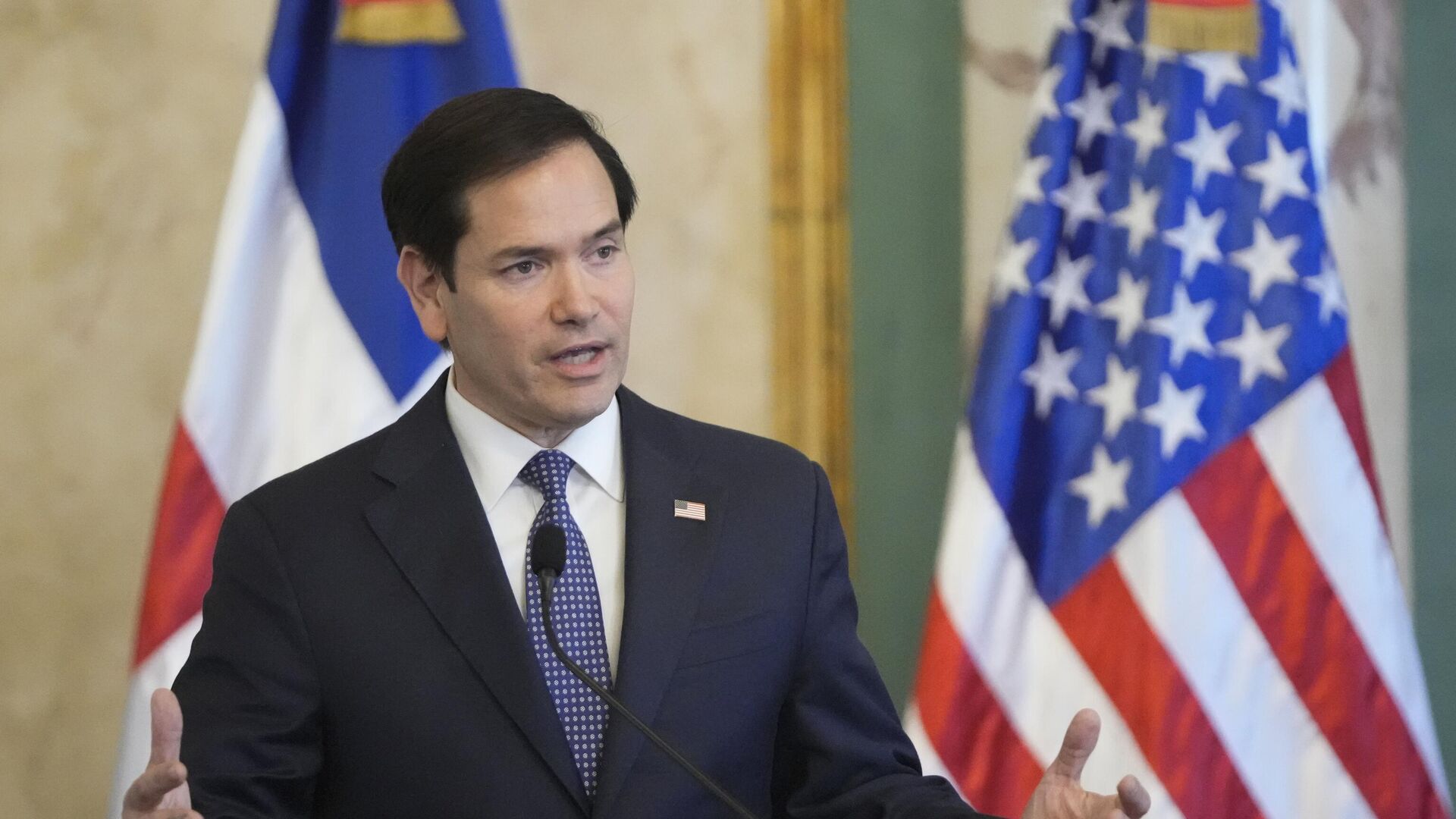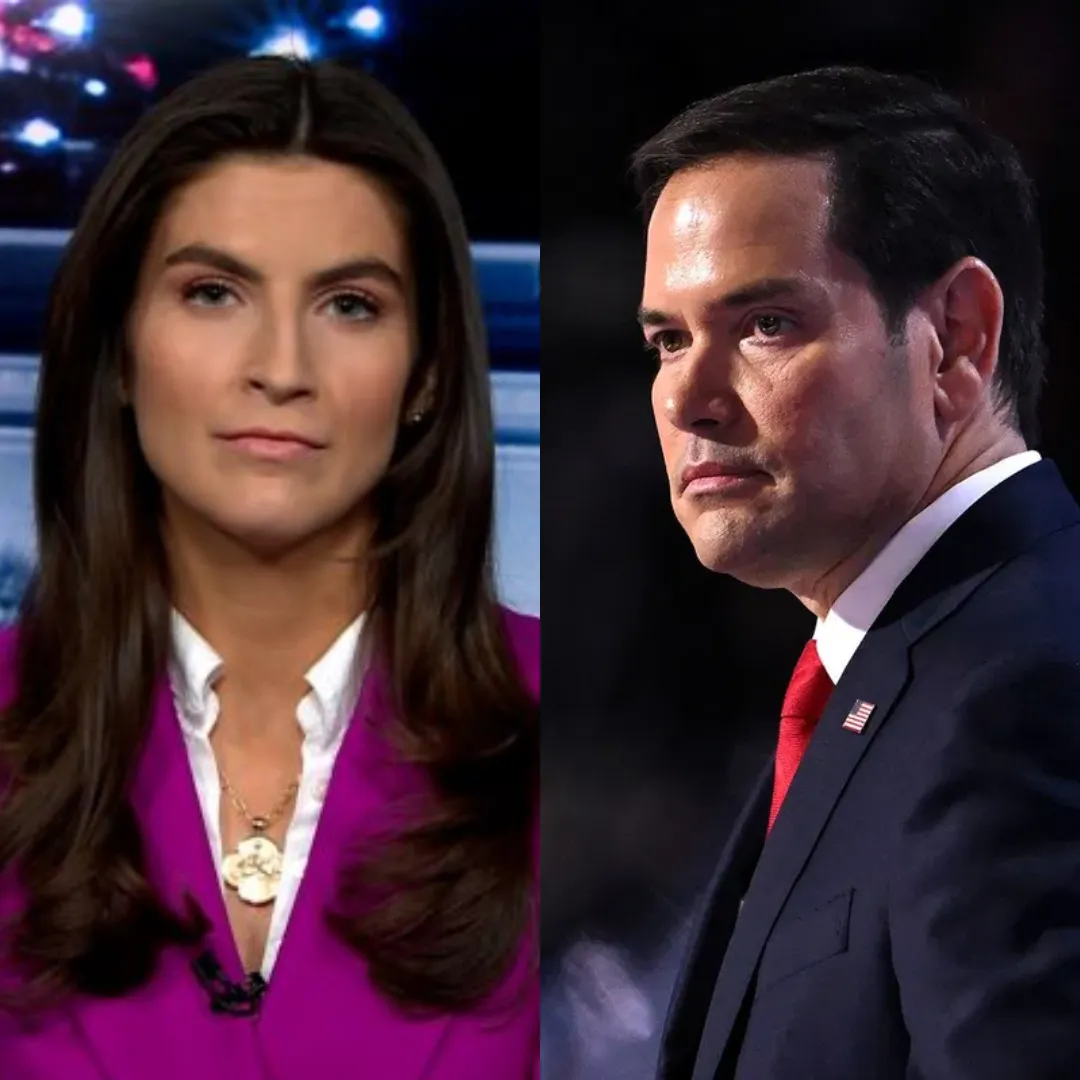
In a groundbreaking diplomatic development, U.S. Secretary of State Marco Rubio met with UAE’s top diplomat, Sheikh Abdullah bin Zayed Al Nahyan, on June 11, 2025, marking a key moment in the strengthening of U.S.–UAE relations.
The meeting, which followed President Donald Trump’s high-profile visit to the Middle East, including stops in the UAE, Saudi Arabia, and Qatar, signals a major shift in the geopolitical dynamics of the region.
The timing of these back-to-back meetings, particularly after Trump’s regional tour, has raised eyebrows and set off a wave of speculation about the future of U.S.-UAE relations, the potential for economic growth, and how this aligns with the ongoing conflict in the Middle East.
During the high-level talks at the U.S. State Department, Rubio and Sheikh Abdullah engaged in a detailed discussion about various regional issues, including security, economic cooperation, and humanitarian efforts.

With both nations having a long history of collaboration, especially in defense and counterterrorism efforts, this meeting underscored their commitment to strengthening the partnership.
However, the talks also explored new avenues for cooperation, notably in advanced technologies such as artificial intelligence (AI), clean energy, and space exploration. These fields are not only of significant strategic importance but also represent areas in which both the U.S. and UAE have heavily invested in recent years.
The UAE has rapidly emerged as a tech-forward economy, with its ambitious plans for innovation in areas like AI and clean energy, which complement the U.S.’s own investments in next-generation infrastructure.
Rubio’s statements highlighted that both nations are strategically aligned in their goals for technological advancement, but the discussions went beyond tech, touching on other critical sectors, such as healthcare, cybersecurity, and education.

These discussions are critical in the context of the UAE’s position as an emerging global leader in innovation, and the U.S.’s desire to partner with nations that share its values of progress, stability, and economic growth.
One of the primary areas of focus during the talks was the issue of security in the Middle East, particularly regarding the evolving threats posed by instability in Syria, Gaza, and Sudan.
Rubio emphasized the importance of multilateral cooperation, noting that it is crucial for nations like the U.S. and UAE to work together to address the growing challenges posed by groups like Hamas and other extremist organizations.
Sheikh Abdullah reinforced the UAE’s commitment to regional peace and stability, reiterating the country’s dedication to providing humanitarian assistance in Gaza, where the humanitarian situation remains dire.
The UAE has been one of the more active Arab states in supporting Gaza, with a focus on rebuilding infrastructure and providing aid to those affected by the ongoing conflict.
While the meeting between Rubio and Sheikh Abdullah was a clear display of diplomatic cooperation, the backdrop of President Trump’s recent Middle East tour looms large.
Trump’s visit saw several significant announcements, including the U.S. support for new Gulf-based investment funds and joint defense agreements, as well as the controversial decision to lift sanctions on Syria.
Critics of the move pointed out that Trump’s actions could potentially embolden the Syrian regime, but the decision was nonetheless a defining moment in his administration’s approach to the region.

Rubio’s meeting with Sheikh Abdullah appeared to build on the momentum generated by Trump’s visit, with a clear focus on transforming symbolic diplomacy into concrete action.
The discussions between Rubio and Sheikh Abdullah are not just a reflection of shifting diplomatic priorities but also highlight a broader push for stability in the Middle East.
The two leaders emphasized their shared commitment to a rules-based international order, highlighting the need for strong global governance, particularly in the face of growing authoritarianism and extremism.
This was an important point of emphasis, as both nations are wary of the rising influence of authoritarian regimes in the region and beyond. The U.S. and UAE’s joint stance against extremism was a defining theme of the talks, underscoring their mutual interest in ensuring that peace and stability are prioritized in their geopolitical strategies.

In addition to these discussions, there was a clear focus on the future of U.S.-UAE relations. The leaders expressed their mutual commitment to developing new avenues of cooperation in a variety of fields, and several joint statements are expected to be released in the coming months.
These statements will likely focus on areas such as AI governance, regional energy corridors, and educational exchange programs, which are key to strengthening the bilateral ties between the two countries.
Diplomatic sources have hinted at the possibility of a state visit by Sheikh Mohammed bin Zayed, the President of the UAE, later this year, which would further deepen the partnership between the U.S. and the UAE.
Despite the relatively low-key nature of the Rubio–Abdullah meeting, the strategic significance cannot be overstated. The meeting served as a clear signal that the U.S. and UAE are not merely transactional allies but partners with a shared vision for the future.

The collaboration is not just about economic or military cooperation but is also grounded in a shared belief in technological progress, regional stability, and a commitment to a more inclusive global future.
These discussions reflect the growing importance of the UAE as a key partner in the Middle East, as well as the U.S.’s increasing recognition of the need for stronger, more diversified alliances in the region.
Looking forward, the future of U.S.-UAE relations appears promising, with a renewed emphasis on cooperation in technology, security, and regional stability. However, the larger geopolitical context is still in flux.
As tensions continue to simmer in places like Syria and Gaza, and as the broader Middle East undergoes significant transformations, it remains to be seen how these relationships will evolve.

The U.S. is faced with the challenge of balancing its traditional alliances with its evolving strategies in the region, while the UAE seeks to position itself as a key player in shaping the future of the Middle East and beyond.
The meeting on June 11, 2025, represents a new chapter in U.S.-UAE relations, one that is defined by a shared commitment to innovation, stability, and a rules-based international order.
The groundwork laid in this meeting will likely shape the future of the bilateral relationship for years to come. As both nations continue to push forward with their respective strategic goals, it’s clear that their partnership will be critical in navigating the complex geopolitical landscape of the Middle East in the coming decades.
In conclusion, the meeting between Secretary Marco Rubio and Sheikh Abdullah bin Zayed marked a significant step in strengthening U.S.-UAE ties, with a focus on collaboration in technology, security, and regional stability. This partnership, built on shared values and common interests, represents a bold vision for the future of the Middle East and beyond.

The diplomatic momentum generated by this meeting, combined with the broader strategic shifts occurring in the region, signals a new era in U.S.-UAE relations. As both countries continue to align their efforts, the world will be watching closely to see how this partnership unfolds.




